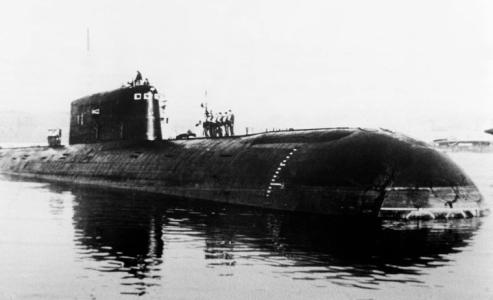USN:
USS Iowa (BB-61) underway in the Pacific, March 2, 1986
The explosion of the No. 2 16-inch gun turret aboard the battleship USS Iowa (BB-61), 330 miles northeast of Puerto Rico. 47 sailors were killed by the blast. 19 April 1989
During a gunnery exercise, at 0955 on 19 April 1989, an explosion ripped through the Number Two 16-inch (406 mm) gun turret, killing 47 crewmen. A gunner's mate in the powder magazine room quickly flooded the No. 2 powder magazine, likely preventing catastrophic damage to the ship. At first,
Naval Investigative Service (NIS, later renamed Naval Criminal Investigative Service or NCIS) investigators theorized that one of the dead crewmen,
Clayton Hartwig, had detonated an explosive device in a suicide attempt after the end of an alleged affair with another sailor. To support this claim, naval officials pointed to several different factors, including Hartwig's life insurance policy, which named Kendall Truitt as the sole beneficiary in the event of his death, the presence of unexplained materials inside turret 2, and his mental state, which was alleged to be unstable.
Although the Navy was satisfied with the investigation and its results, others were unconvinced, and in October 1991, amid increasing criticism,
Congress forced the Navy to reopen the investigation. This second investigation, handled by independent investigators, was hampered as most of the original debris from
Iowa had been cleaned up or otherwise disposed of by the Navy before and after the first investigation, but it did uncover evidence pointing to an accidental powder explosion rather than an intentional act of sabotage.
While
Iowa was undergoing modernization in the early 1980s, her sister ship
New Jersey had been dispatched to Lebanon to provide offshore fire support. At the time,
New Jersey was the only commissioned battleship anywhere in the world, and it was found that, in an effort to get another battleship commissioned to relieve
New Jersey, the modernization of
Iowa was stepped up, leaving her in poor condition when she recommissioned in 1984. It was also determined that Captain Fred Moosally was more concerned with the maintenance of the missiles than the training and manning of guns.
Powder from the same lot as the one under investigation was tested at the
Naval Surface Warfare Center Dahlgren Division.
Spontaneous combustion was achieved with the powder, which had been originally milled in the 1930s and improperly stored in a barge at the Navy's
Yorktown, Virginia, Naval Weapons Station during a 1988 dry-docking of
Iowa. As it degrades, gunpowder gives off
ether gas, which is highly flammable and could be ignited by a spark. This revelation resulted in a shift in the Navy's position on the incident, and Admiral
Frank Kelso, the Chief of Naval Operations at the time, publicly apologized to the Hartwig family, concluding that there was no real evidence to support the claim that he had intentionally killed the other sailors.
Iowa captain Fred Moosally was severely criticized for his handling of the matter, and as a result of the incident the Navy changed the powder-handling procedures for its battleships. The incident remains one of the surface Navy's worst losses of life during peacetime operations.










